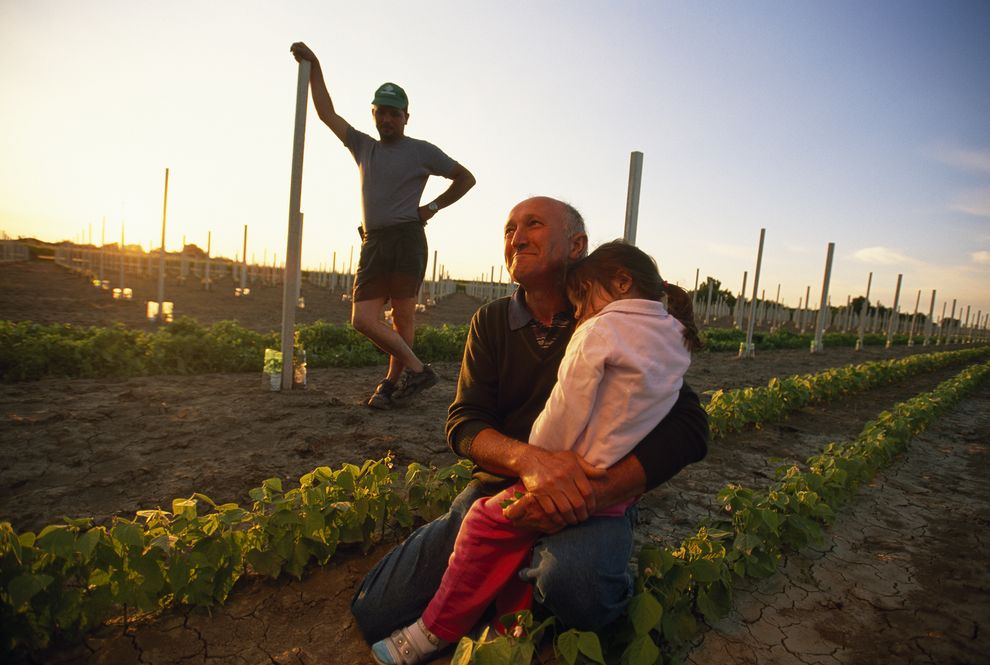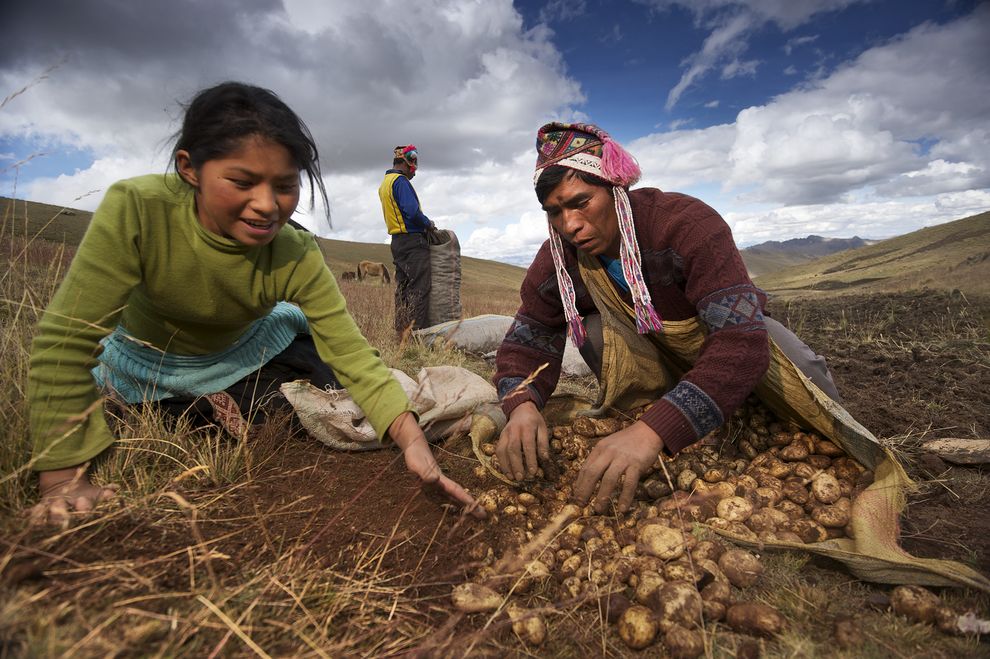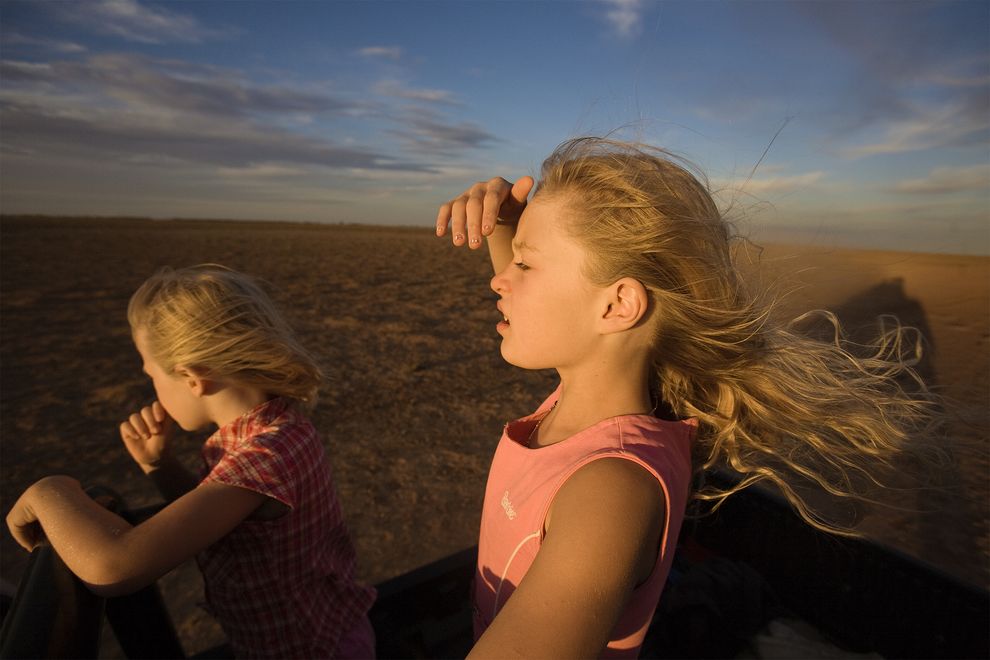
The challenge is huge but the solution may be small—very small.
Faced with global warming and a population that will swell to nine billion by 2050, a growing number of experts say that the way to feed the masses as climate change makes growing our food more difficult is to focus on family farmers, who often can barely feed themselves.
When policymakers in the developed world talk about feeding billions of extra mouths in the decades to come, its multinational agribusinesses-which operate industrial-size farms that can fill entire cargo trains with grain—usually get most of the attention.
But in the long run, it’s small-scale farmers in the developing world, using low-tech but sustainable agricultural techniques, who may be best poised to lead the way in adapting to a warmer world and ensuring the security of the global food supply.
There are more than 500 million family farmers who produce at least 56 percent of the world’s food. Most are subsistence farmers, scratching out barely enough to feed their own families, with little or nothing left over to take to market.

A report on family farms released in March by the sustainable agriculture group Food Tank credits these small-scale farmers with contributing to global food security-that is, having sufficient quantities of food available on a consistent basis-through the use of more sustainable agricultural practices.
For instance, while agribusinesses use fertilizers and pesticides to yield bumper crops of single grains like corn and wheat, smallholder farmers are growing indigenous plants that help protect increasingly stressed natural resources (like water) and that improve the density of nutrients in crops.
That helps explain why the Food Tank report, which crunched data from the United Nations Food and Agriculture Organization (FAO) and other sources, concluded that smallholder farms “are not only feeding the world, but also nourishing the planet.”
The United Nations, for its part, has designated 2014 as the International Year of Family Farming to raise the profile of these unsung agricultural workers and spotlight the roles they could play in the face of challenges like climate change, malnutrition, and poverty.

Small-Scale Vulnerability—and Resilience
A sobering report released last month by the UN’s Intergovernmental Panel on Climate Change warned of cataclysmic consequences of global warming that are already being felt, including drought, extreme heat, and flash floods.
Those changes have an outsize impact on farmers.
For years, civil wars, corrupt governments, poor infrastructure, and other political conditions were the major impediments to food production and distribution.
But Jerry Glover, a U.S. Agency for International Development agroecologist, says there’s been a “significant shift … In many regions, an emerging cause of food insecurity is the lack of ability of those farm fields to support yields that are necessary because of land degradation and the effects of climate change.”
Glover and sustainable agriculture experts like Danielle Nierenberg, president of Food Tank, see smallholder farms in the developing world—and sometimes on city rooftops in the developed world—as leading the way in navigating an increasingly uncertain agricultural landscape.
In its recent report, Food Tank cited the many low-tech “agroecological approaches” used by smallholder farms “to combat climate change and create resilience to food price shocks, natural disasters, and conflict.”
Among them: agroforestry, which integrates trees and shrubs into crop and livestock fields; solar-powered drip irrigation, which delivers water directly to plant roots; intercropping, which involves planting two or more crops near each other to maximize the use of light, water, and nutrients; and the use of green manures, which are quick-growing plants that help prevent erosion and replace nutrients in the soil.
Former U.S. Department of Agriculture Secretary Dan Glickman recently returned from Guatemala, where farmers are adding vegetables—and biodiversity—to traditional corn and bean fields, rotating coffee with other crops to fight a deadly leaf fungus, and using drip irrigation techniques to grow mangos and plantains.
Such labor-intensive methods haven’t been widely adapted by big agriculture, which has generally been more focused on increasing yields on some of the world’s most productive lands.
Indeed, large-scale monoculture farming, with its heavy use of synthetic fertilizers, pesticides, and genetically modified seeds, has contributed to the disappearance of about 75 percent of plant genetic diversity over the last century, according to the FAO.
At a time when Food Tank says that 30 percent of the world’s arable land has been depleted of nutrients and has become less productive because of unsustainable agricultural methods, family farmers who plant a variety of indigenous crops are obtaining 20 to 60 percent higher yields than farmers who cultivate only one crop.
And “forgotten crops” like millet, sorghum, and the now-trendy quinoa—often staples of smallholder farms—can go longer without water and can better resist disease than mass-produced and resource-thirsty corn, wheat, soybeans, or rice.
“These are the crops often referred to as ‘poor people’s food’ or sometimes even ‘weeds,'” Nierenberg says, “but these are foods that can be resilient to the impacts of climate change.”
Farming Out of Poverty
Even as they demonstrate ways to help feed a more crowded, warmer world, small-scale farmers are among the most threatened by climate change and the surging population.
Many family farmers till two hectares (about five acres) or less, often on marginal lands susceptible to changing climate and catastrophic weather events in developing areas of sub-Saharan Africa, Asia, and Central America.
And despite their vocation, they’re among the world’s poorest and most malnourished. To make matters worse, they live disproportionately in regions that are expected to see the largest population bumps by midcentury, making limited resources even scarcer.
“Most of the poverty in the developing world is in rural and agricultural areas,” says Glickman. “To the extent that we can give family farms [and] smallholder farms in sub-Saharan Africa or South Asia additional tools to use better farming methods, better seeds, better fertilizer, more technical information to grow better crops, we help pull them out of poverty.”
According to a UN Millennium Project Task Force report cited by Food Tank, about half of the world’s hungry live on smallholder family farms.
Investing in these “stewards of the land,” as Nierenberg calls them, so that they can grow more nutritious food will not only help raise them out of poverty but also help a warming planet.
Source: Family Farmers Hold Keys to Agriculture in a Warming World.
Related articles





